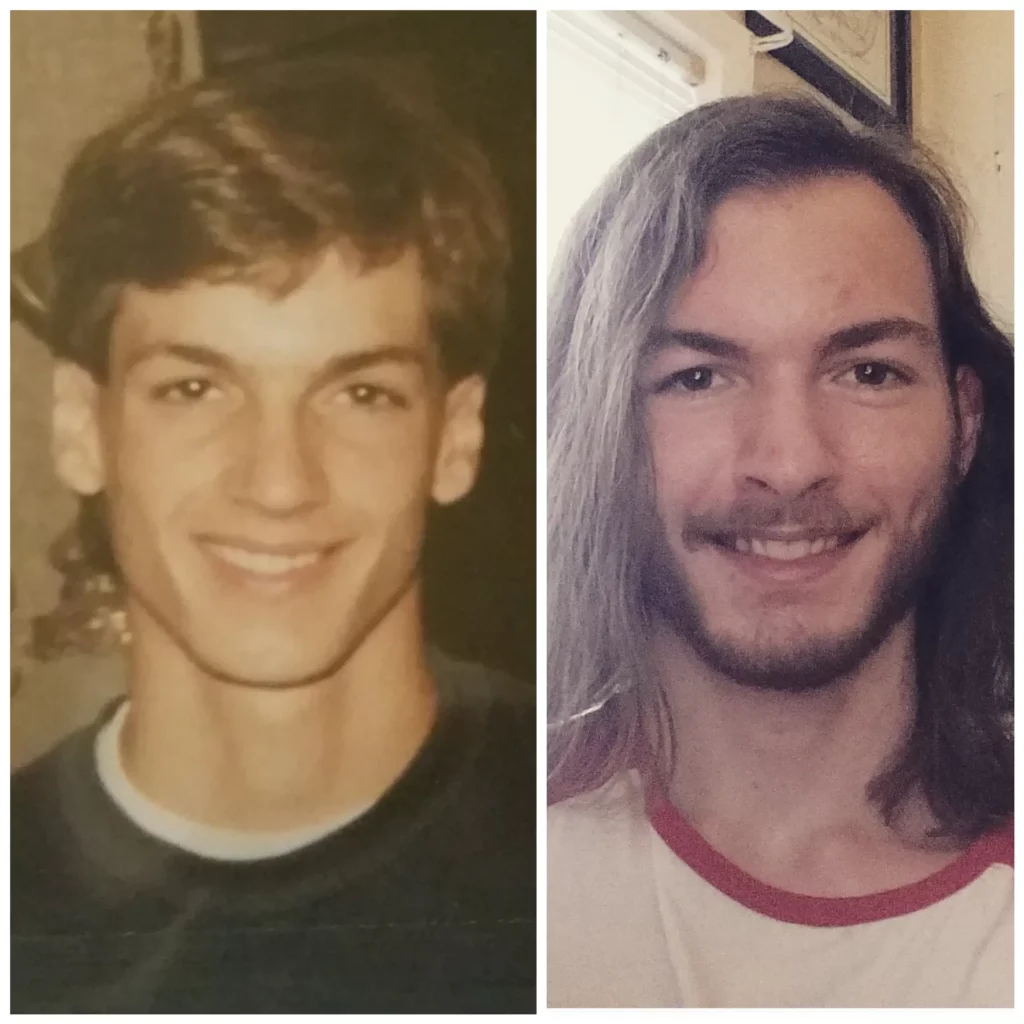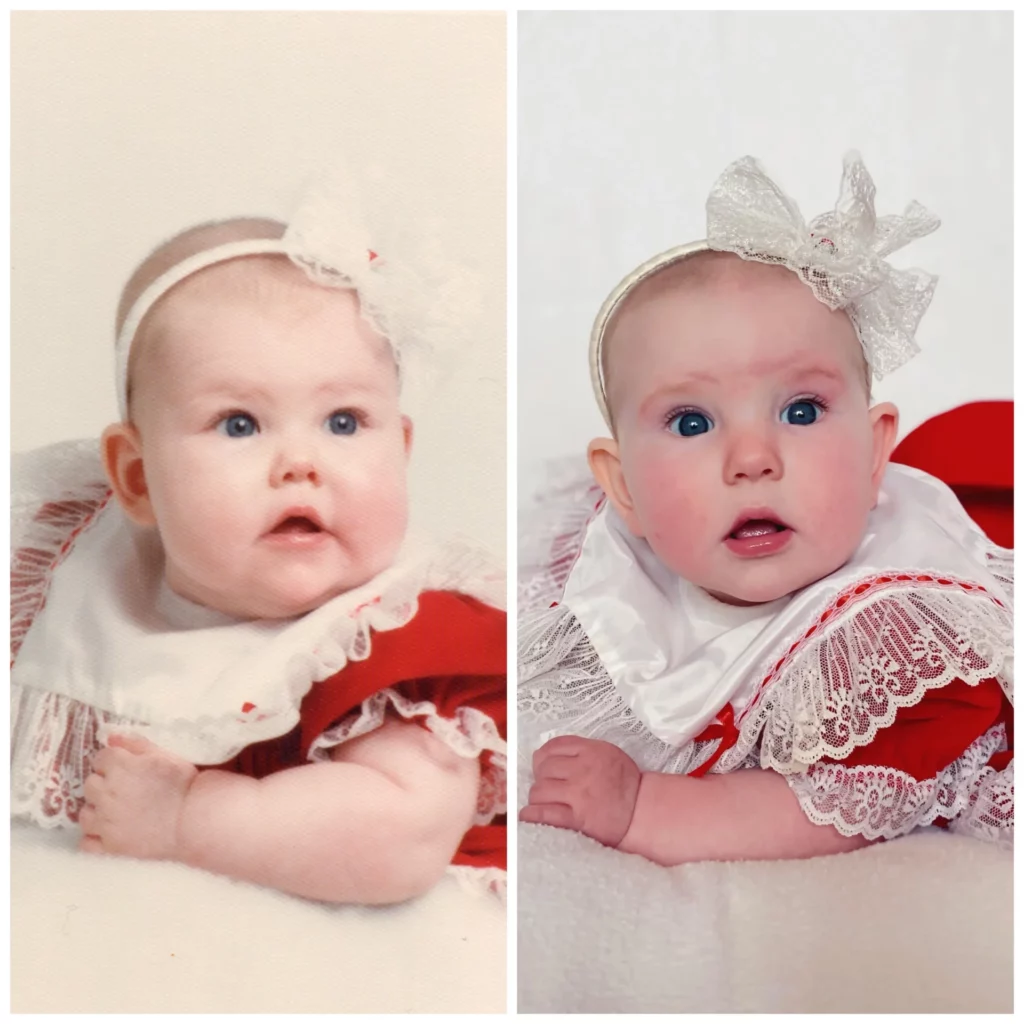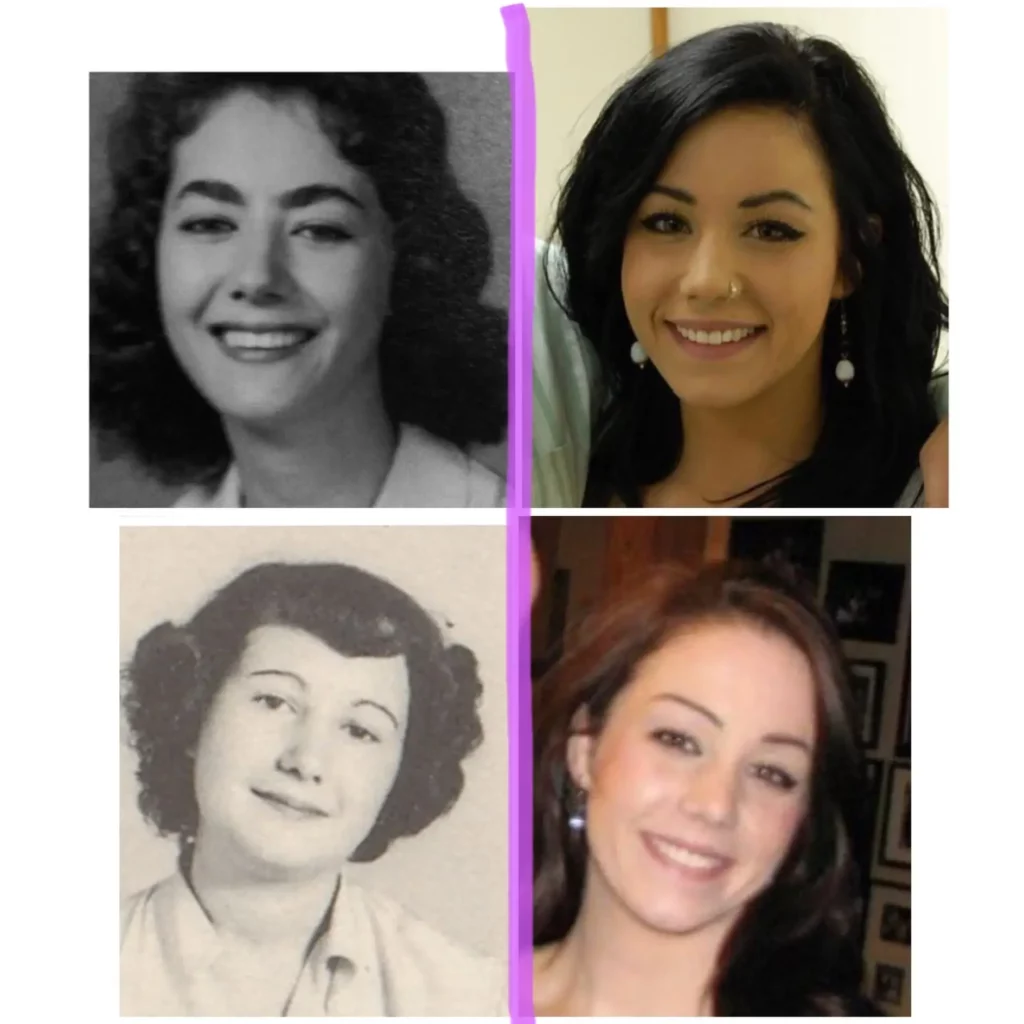When it comes to physical appearances, it’s no secret that genes play a significant role in shaping our features. Family members often bear similarities to one another, from shared eye color to facial structures that reflect their genetic connection. However, there are occasions when the resemblance goes beyond the ordinary, blurring the line between relatives and clones. In these extraordinary cases, it seems as though genes have created exact replicas rather than just family resemblances.
We are all familiar with the concept of inheriting hair color or the ability to roll our tongues from our parents. These traits are often passed down through generations, creating recognizable family characteristics. However, there are instances where the similarities between relatives are so striking that it’s hard to believe they are not identical twins.
In one astonishing case, a father and son appeared to be mirror images of each other. From their facial features to their hairstyles, it was difficult to tell them apart. Their uncanny resemblance went beyond simple genetics and left people wondering if they were witnessing a true genetic clone.
Siblings also have the potential to exhibit astonishing resemblances. In some families, brothers and sisters share such striking similarities that they could easily be mistaken for twins. From their physical stature to their mannerisms, these siblings appear to be almost indistinguishable, defying conventional expectations of genetic variation.
While genetic inheritance can create family resemblances, the instances where relatives resemble clones are rare and captivating. It raises intriguing questions about the intricate nature of genetics and the possibility of certain genes dominating the expression of physical characteristics.
Among the cases of astonishing resemblance, there have been documented instances of parents giving birth to children who are practically identical to them. These extraordinary occurrences leave experts and onlookers amazed, as it challenges the notion of genetic variation and diversity.
In some cases, individuals have stumbled upon long-lost relatives who bear such a striking resemblance that it’s as if they are looking into a mirror. The discovery of these “genetic doppelgängers” creates a sense of awe and wonder, reminding us of the fascinating complexity of our genetic makeup.
Whether it’s the shape of the eyes, the curve of the smile, or even the way they walk, these instances of cloned-like resemblances leave us questioning the intricacies of genetic inheritance. While we may expect some family similarities, encountering true clones within a family lineage is a remarkable occurrence that highlights the mysteries of genetics.
As science continues to unravel the secrets of our DNA, it’s these exceptional cases that remind us of the boundless possibilities within the realm of genetics. Exploring the instances where genes have seemingly created clones rather than just relatives opens our minds to the extraordinary and awe-inspiring wonders of human biology.
In conclusion, while family resemblances are common due to shared genetic traits, there are rare occurrences where the similarities between relatives surpass expectations and create true clones. These extraordinary cases challenge our understanding of genetic inheritance and showcase the intricacies of human biology. As we continue to explore the mysteries of genetics, these remarkable instances remind us that the possibilities within the realm of genetics are endless and often awe-inspiring.
My Mother in 1967 vs. My Wife in 2017

Me and My Daughter, Wearing Our Fathers’ Hats at Fifteen Months

My Dad, My Son, and Me

A Journey of 30 Years in Two Photos, from Baby to Father

My Grandma’s 1955 Lebanese Passport Photo and Me in the Present

My Freshman Year High School Picture (2004) Next to My Dad’s Senior Picture (1975)

Before and After Drugs – A Side-by-Side Comparison

Me and My Son at Age 3

My Husband in 1978 and My Daughter in 2012

My Daughter at Age 2 in 1998 vs. My Granddaughter at Age 2 in 2019

My Dad in 1985ish? and Me on New Year’s Eve 2017

A 32-Year Difference Between Myself and My Son

Me in 1988 vs. My Daughter in 2021

My Grandpa and Me

Comparing Photos of Me Next to My Paternal Great Aunt and Paternal Grandma

My Father and Me in 1980, and My Son and Me in 2018

My Firstborn in 2015 (left) and My Secondborn in 2019 (right), Four Years Apart!

My Brother in 1992 and His Son in 2022

A Startling Comparison – My Buddy in 2014 vs. His Father in 1977, Both at 20 Years Old

My Grandfather in the 1950s and Me in 2010







